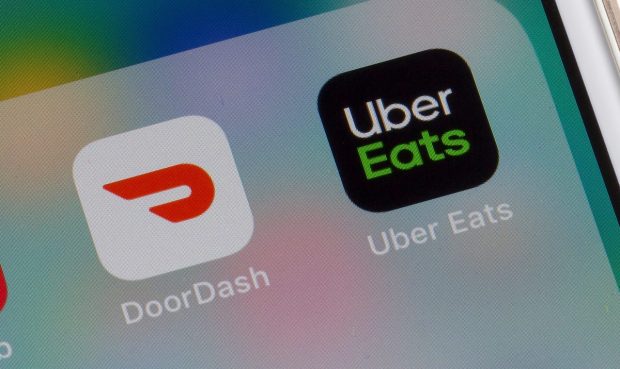DoorDash, Uber Eats Add Non-Restaurant Merchants to Drive Sales Amid Inflation

As rising food prices have many consumers shifting from costly restaurant orders to more budget-friendly alternatives, third-party aggregators are investing in their non-restaurant categories.
DoorDash, the United States’ leading restaurant aggregator, announced Monday (Aug. 15) a partnership with discount grocer Grocery Outlet to offer on-demand delivery from approximately 400 of the retailer’s stores across eight states.
“As consumers face rising prices, we’re thrilled to partner with Grocery Outlet to provide consumers across the country with a new way to purchase more affordable groceries while maximizing their budgets,” said DoorDash Vice President of Business Development Shanna Prevé in a statement. “With this partnership, consumers can find and enjoy even more affordable grocery selection on our marketplace.”
Indeed, consumers are feeling the impact of skyrocketing food prices. The Consumer Price Index for All Urban Consumers (CPI-U), reported by the U.S. Bureau of Labor Statistics (BLS) Wednesday (Aug. 10), revealed that in July, food prices rose 10.9% year over year. Specifically, food at home (i.e., grocery) prices rose 13.1% year over year, while food away from home (i.e., restaurant) prices rose 7.6%.
Yet even these significant increases do not tell the full story as far as how consumers experience food inflation. Data from a national online study of 3,783 consumers conducted by PYMNTS last month revealed that consumers reported paying 20% to 30% more for retail and grocery purchases and to eat at restaurants.
Read more: Why Retailers Should Worry About Inflation but Dread the Wealth Effect
Uber Eats, meanwhile, is looking to its non-food verticals to drive sales in the face of increasing hesitancy around restaurant ordering. The aggregator announced Monday that it is partnering with Office Depot to provide on-demand delivery from more than 900 Office Depot and OfficeMax stores.
“We know this is the busiest time of year for many, with back to school and even going back to the office,” said Christian Freese, head of new verticals for Uber Eats in the U.S. and Canada, in a statement. “At Uber, we’re always looking for ways to make peoples’ lives easier by helping them get whatever they need — whenever they need it — delivered to their doorstep.”
Freese added that the partnership is meant to target consumers’ last-minute office supply needs such as a “printer paper shortage or a school project glue stick emergency.”
For the past couple of years, aggregators have been stepping up their non-food offerings and investing in new verticals, looking to drive more revenue from their existing networks of drivers. Now, as the share of consumers willing to pay the premium for on-demand delivery and for restaurant-made meals begins to shrink, it is becoming even more important for aggregators to create additional sales opportunities with their existing customers.
